
These old photographs of the American frontier capture life and struggle in the Wild West. The completion of the railroads to the West following the American Civil War opened up vast areas of the region to settlement and economic development.
The archetypical Old West period is generally accepted by historians to have occurred between the end of the American Civil War in 1865 until the closing of the frontier by the Census Bureau in 1890.
A frontier is a zone of contact at the edge of a line of settlement. Leading theorist Frederick Jackson Turner went deeper, arguing that the frontier was the scene of a defining process of American civilization: “The frontier,” he asserted, “promoted the formation of a composite nationality for the American people.”

Crossing Gila River in buckboard wagons near San Carlos, Arizona, 1885.
He theorized it was a process of development: “This perennial rebirth, this fluidity of American life, this expansion westward…furnish[es] the forces dominating American character.”
Turner’s ideas since 1893 have inspired generations of historians (and critics) to explore multiple individual American frontiers, but the popular folk frontier concentrates on the conquest and settlement of Native American lands west of the Mississippi River, in what is now the Midwest, Texas, the Great Plains, the Rocky Mountains, the Southwest, and the West Coast.
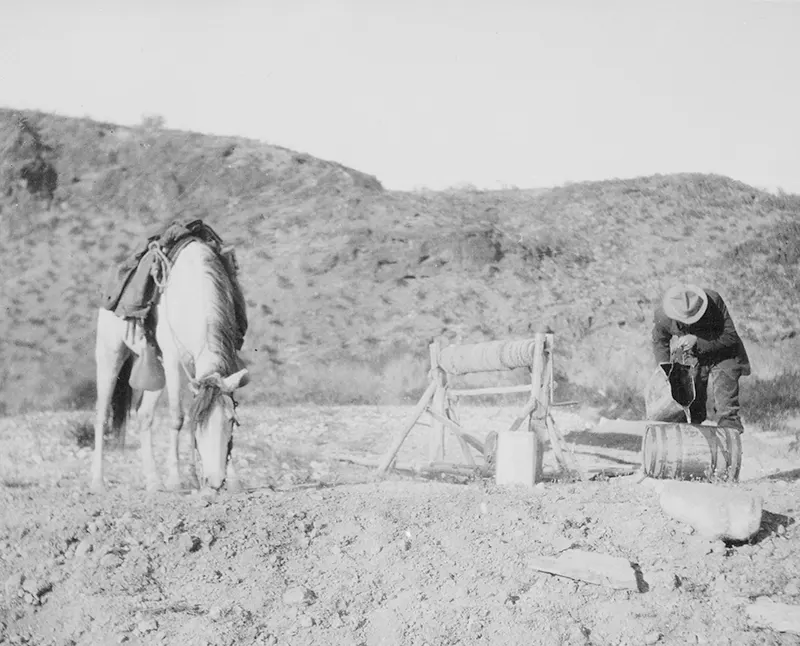
A rider fills his keg from a desert well 30 miles north of Palomas, Arizona. His horse refreshes himself nearby. 1907.
As defined by Hine and Faragher, “frontier history tells the story of the creation and defense of communities, the use of the land, the development of crops and hotels, and the formation of states.”
They explain, “It is a tale of conquest, but also one of survival, persistence, and the merging of peoples and cultures that gave birth and continuing life to America.”
Turner himself repeatedly emphasized how the availability of free land to start new farms attracted pioneering Americans: “The existence of an area of free land, its continuous recession, and the advance of American settlement westward, explain American development.”

Band of Apache Indian prisoners at rest stop beside Southern Pacific Railway, near Nueces River, Texas, 1886.
Through treaties with foreign nations and native tribes, political compromise, military conquest, the establishment of law and order, the building of farms, ranches, and towns, the marking of trails and digging of mines, and the pulling in of great migrations of foreigners, the United States expanded from coast to coast.
In his “Frontier Thesis” (1893), Turner theorized that the frontier was a process that transformed Europeans into a new people, the Americans, whose values focused on equality, democracy, and optimism, as well as individualism, self-reliance, and even violence.

Two common methods of hauling water in Old Mexico and the southwestern United States. Texas, 1905.
Settlement from the East transformed the Great Plains. The huge herds of American bison that roamed the plains were almost wiped out, and farmers plowed the natural grasses to plant wheat and other crops.
The cattle industry rose in importance as the railroad provided a practical means for getting the cattle to market.
The loss of the bison and growth of white settlement drastically affected the lives of the Native Americans living in the West.
In the conflicts that resulted, the Native Americans, despite occasional victories, seemed doomed to defeat by the greater numbers of settlers and the military force of the U.S. government.
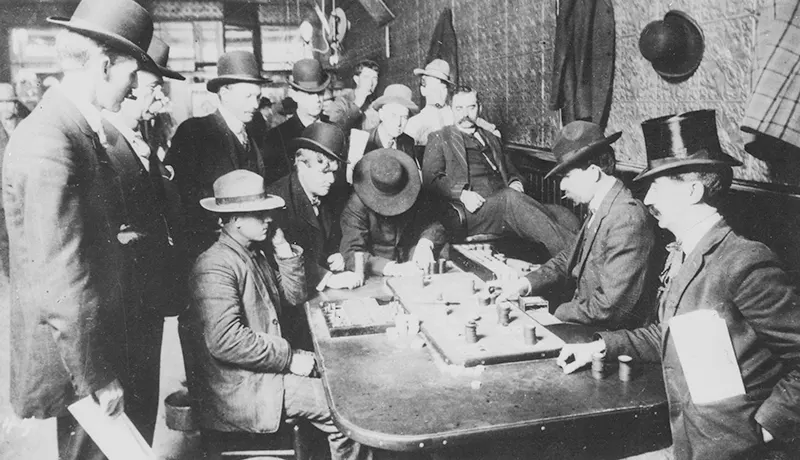
Men gamble over a game of Faro inside a saloon. Bisbee, Arizona. 1900.
By the 1880s, most Natives had been confined to reservations, often in areas of the West that appeared least desirable to white settlers.
The cowboy became the symbol for the West in the late 19th century, often depicted in popular culture as a glamorous or heroic figure. The stereotype of the heroic white cowboy is far from true, however.
The first cowboys were Spanish vaqueros, who had introduced cattle to Mexico centuries earlier. Black cowboys also rode the range.
Furthermore, the life of the cowboy was far from glamorous, involving long, hard hours of labor, poor living conditions, and economic hardship.

A new settler, at the site of a new town, looks for a lot. Guthrie, Oklahoma. 1889.
The cities played an essential role in the development of the frontier, as transportation hubs, financial and communications centers, and providers of merchandise, services, and entertainment.
As the railroads pushed westward into the unsettled territory after 1860, they built service towns to handle the needs of railroad construction crews, train crews, and passengers who ate meals at scheduled stops.
In most of the South, there were very few cities of any size for miles around, and this pattern held for Texas as well, so railroads did not arrive until the 1880s.
They then shipped the cattle out and cattle drives became short-distance affairs. However, the passenger trains were often the targets of armed gangs.
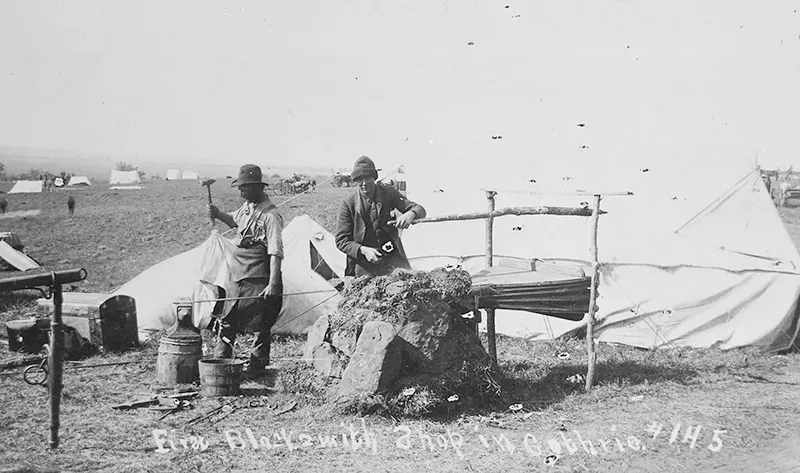
First Blacksmith Shop in Guthrie. Oklahoma. 1889.
European immigrants often built communities of similar religious and ethnic backgrounds. For example, many Finns went to Minnesota and Michigan, Swedes and Norwegians to Minnesota and the Dakotas, Irish to railroad centers along the transcontinental lines, Volga Germans to North Dakota, and German Jews to Portland, Oregon.
African Americans moved West as soldiers, as well as cowboys, farmhands, saloon workers, cooks, and outlaws.
The Buffalo Soldiers were soldiers in the all-black 9th and 10th Cavalry regiments, and 24th and 25th Infantry Regiments of the U.S. Army. They had white officers and served in numerous western forts.

Land in a new territory is auctioned off in this tent. California. 1904.
About 4,000 black people came to California during the Gold Rush days. In 1879, after the end of Reconstruction in the South, several thousand Freedmen moved from Southern states to Kansas.
Known as the Exodusters, they were lured by the prospect of good, cheap Homestead Law land and better treatment.
The all-black town of Nicodemus, Kansas, which was founded in 1877, was an organized settlement that predates the Exodusters but is often associated with them.
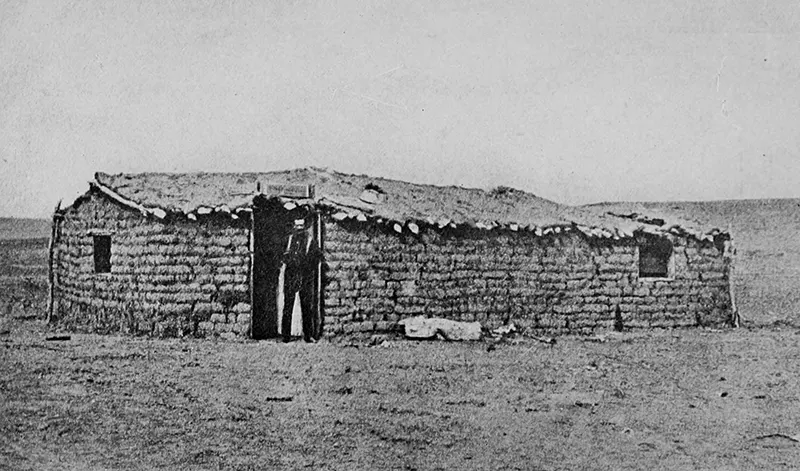
First house on the present site of Dodge City, Kansas. Built sometime in August, 1872.
As the American frontier passed into history, the myths of the West in fiction and film took a firm hold in the imaginations of Americans and foreigners alike.
In David Murdoch’s view, America is exceptional in choosing its iconic self-image: “No other nation has taken a time and place from its past and produced a construct of the imagination equal to America’s creation of the West.”
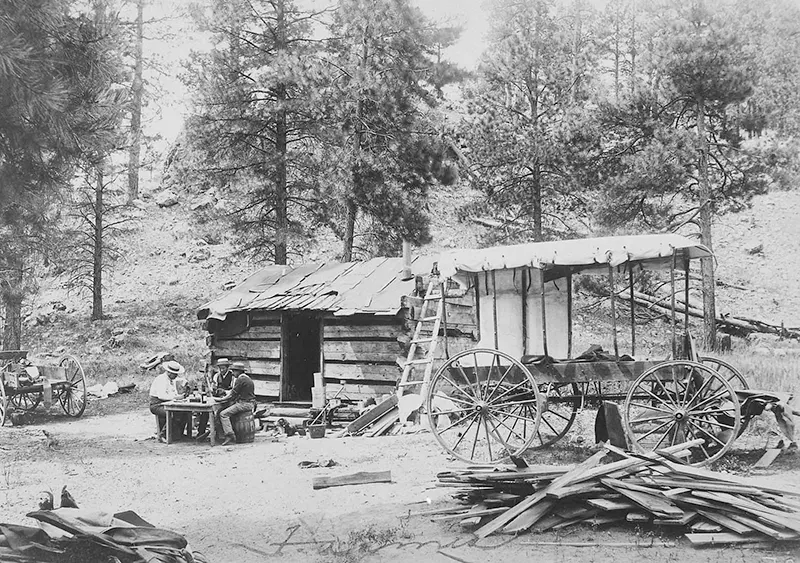
An Arizona poker party, at John Doyle’s ranch. Arizona, 1887-1889.
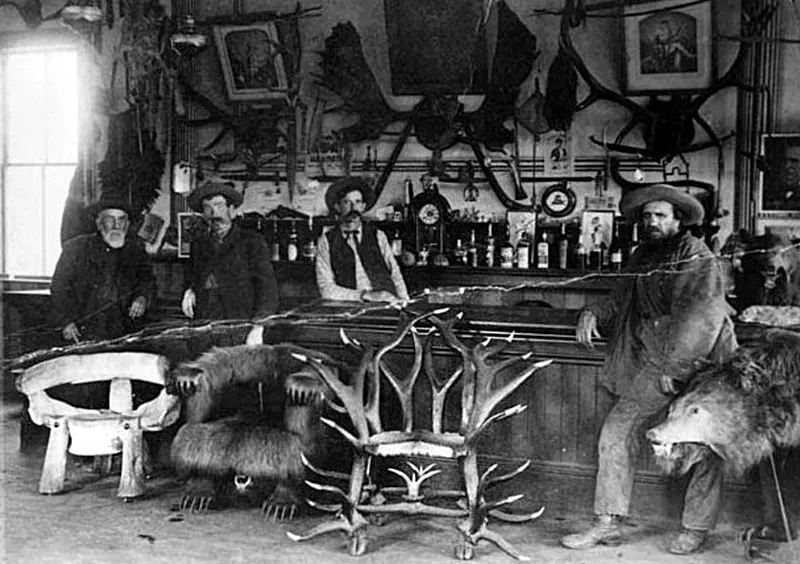
Inside a bar at the Table Bluff Hotel and Saloon. Humboldt County, California. 1889.
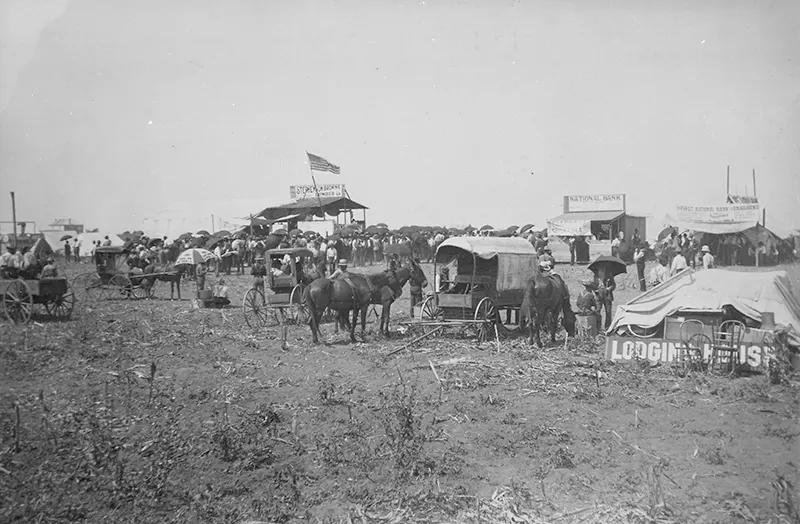
Starting a new town: Anadarko Townsite, August 8, 1901. Auction in progress in lumber company booth. Temporary bank buildings and the beginnings of a lodging house nearby.
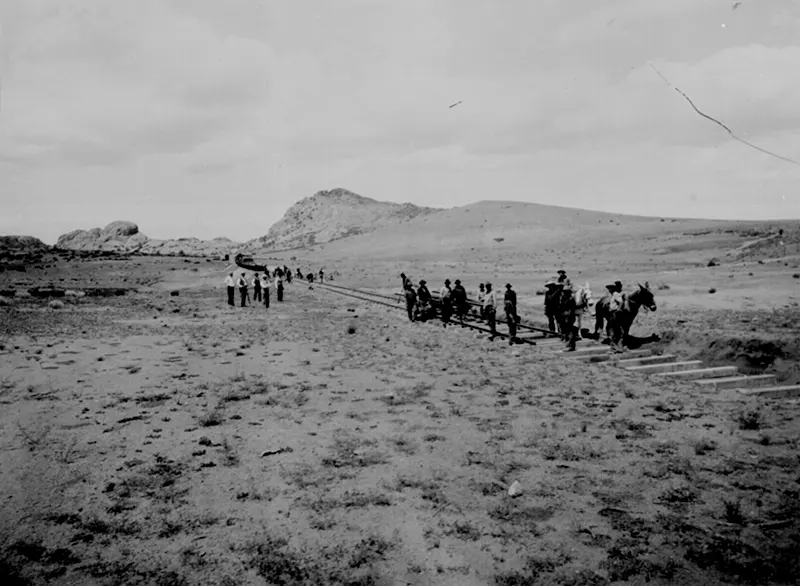
Men lay down track for a new railroad, connecting the wild frontier with the world. Arizona. 1898.

Photograph of a family with their covered wagon during the Great Western Migration. Loup Valley, Nebraska. 1886.

Discovery party and horses on hot, slick rocks of Navajo Mountain on their way to Rainbow Bridge. Utah, 1909.
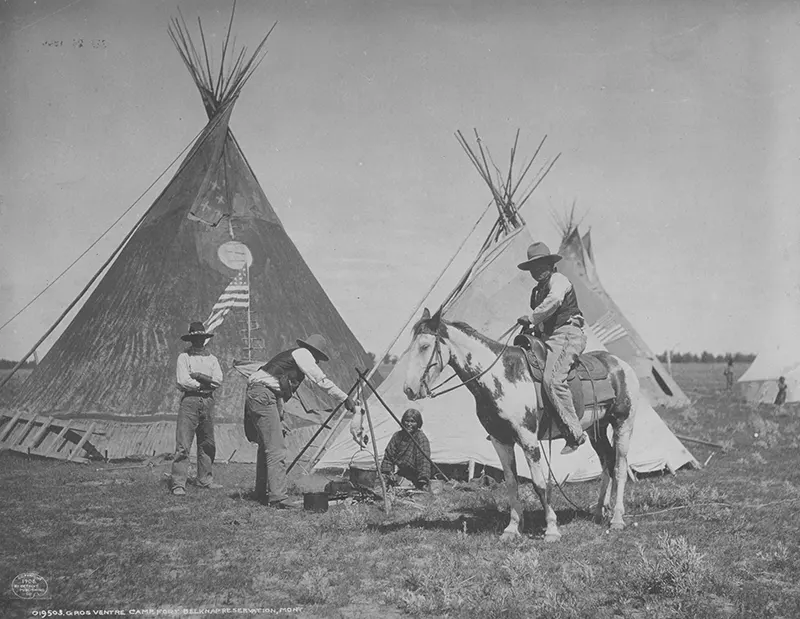
Gros Ventre Camp, Fort Belknap Reservation. A dog is being roasted over the cooking pot at Fort Belknap Reservation, Montana in 1906.
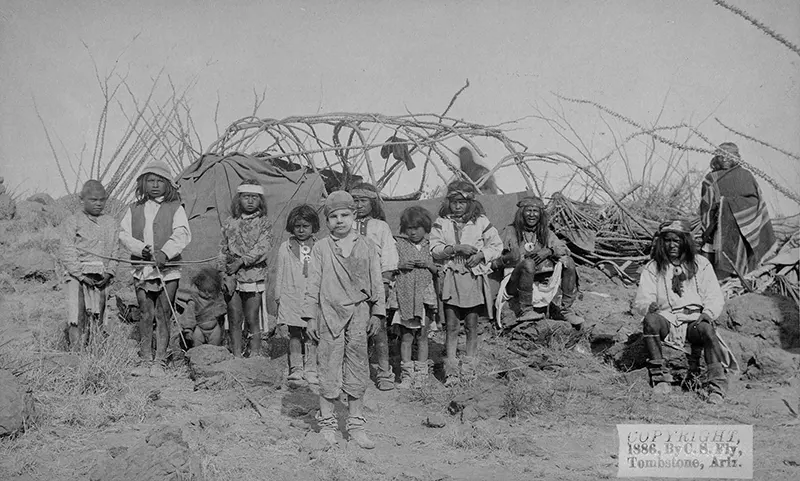
Eleven year old Jimmy McKinn was abducted in early September 1885 by Geronimo. When the Indians were briefly captured in March 1886, Jimmy bitterly resisted being returned to his family, wanting to stay among the Apache. He was photographed among the Indians before Geronimo’s surrender to General Crook.

Roundup on the Sherman Ranch, Genesee, Kansas. Cowboy with lasso readied looks beyond the herd on the open range to his fellow cowpunchers waiting on the horizon, 1902.

Cowboys branding calves. Montana.

Buffalo hide yard in Dodge City, Kansas in 1878. It shows 40,000 buffalo hides.
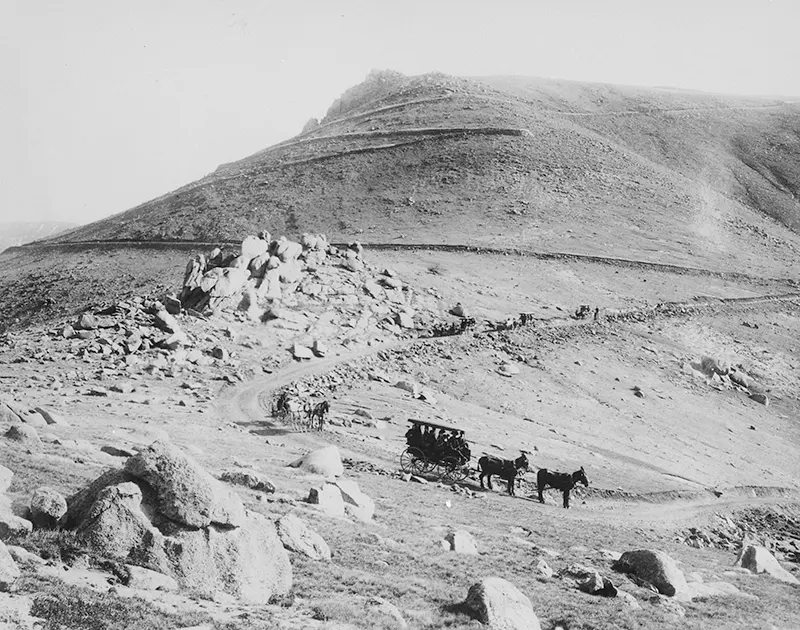
Buckboard and coaches zigzagging down the “W” Pike’s Peak carriage road, Colorado, 1911.

Outlaw John Sontag was shot to death on Sept. 14, 1904. He was not yet dead when this picture was taken.

Camp of the miners of the North Star and Mountaineer lodes. San Juan County, Colorado, 1875.

A gold rush town in Deadwood, Dakota. 1876
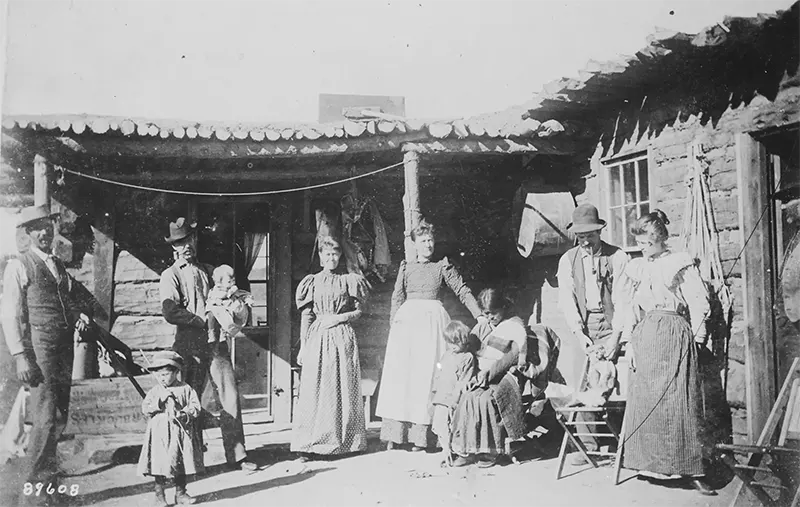
A family outside their home. New Mexico. 1895. Note the Native American servant holds their child.

Saloons and disreputable places of Hazen, Nevada, 1905.
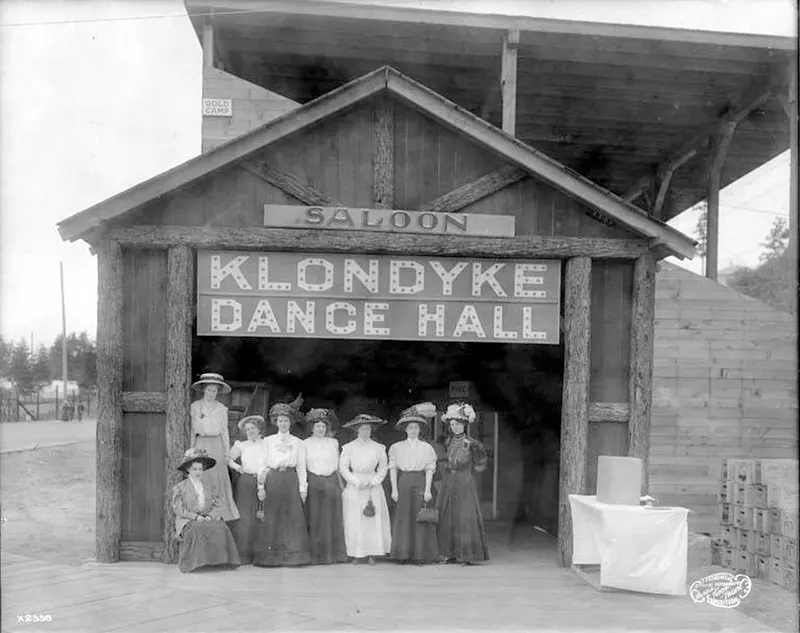
The Klondyke Dance Hall and saloon. Seattle, Washington. 1909.
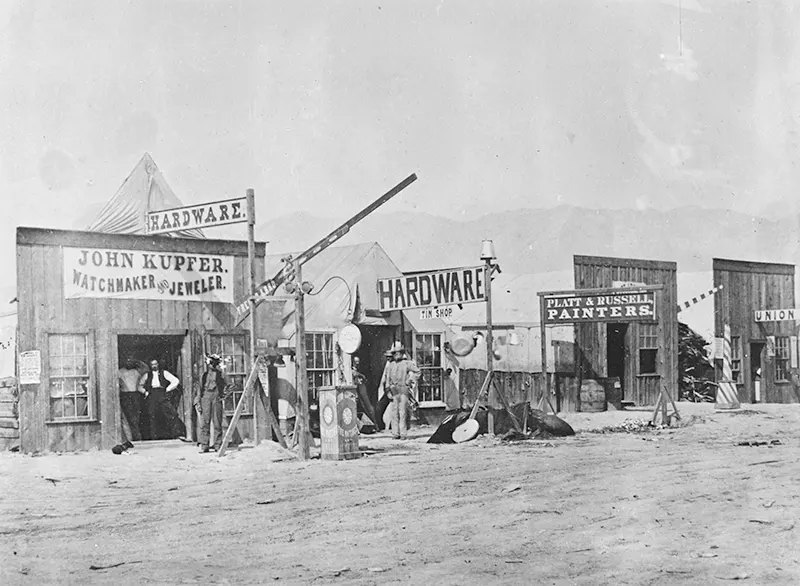
Street view in a typical American Frontier town, Corinne, Utah, 1869.

A cow carries seven children “to school” (as claimed in the original caption). Okanogan, Washington. 1907.

A teacher and her students stand in front of a sod schoolhouse. Woods County, Oklahoma. 1895.

First water works of Perry, Oklahoma, 1893.

Correspondent Fred W. Loring and his mule He was killed by Apaches two days after this picture was taken. Arizona, 1871.
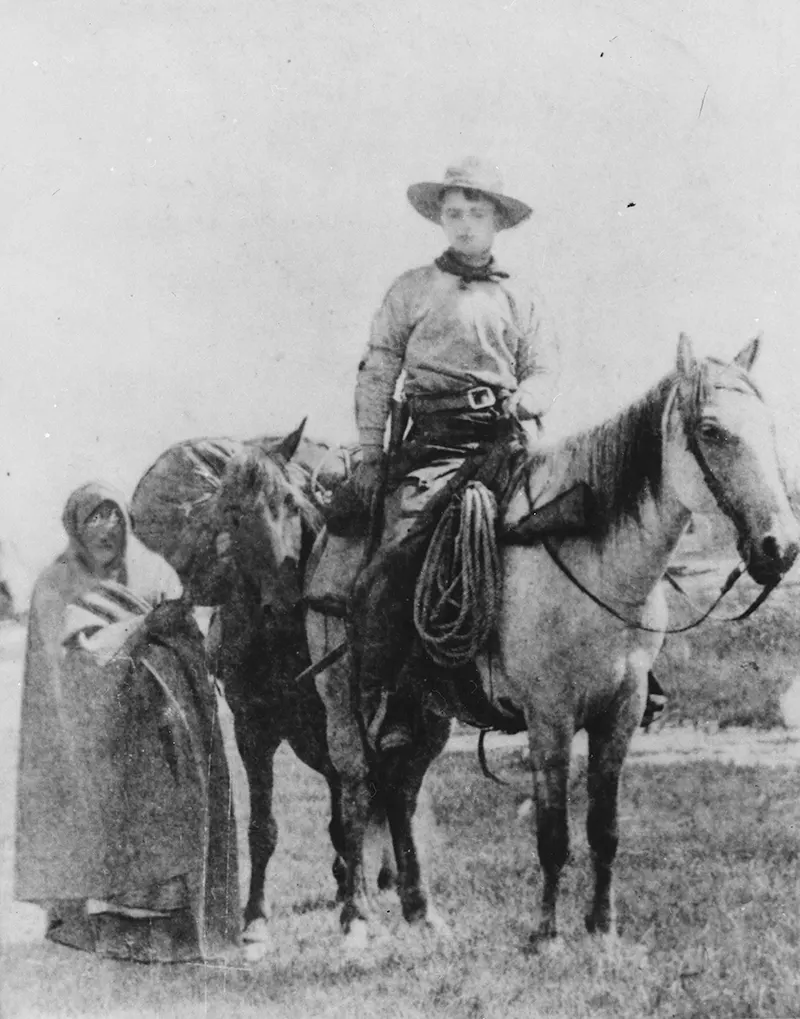
A Pony Express rider, 1861.

“Trappers and hunters in the Four Peaks country in Brown’s Basin, Arizona. Two Crab Tree boys, their father and the dogs and burrows which they hunt with. Their cabin is located on Long Creek, at the entrance of Hell’s Hip Pocket in Brown’s Basin, between Four Peaks and Salt River.”
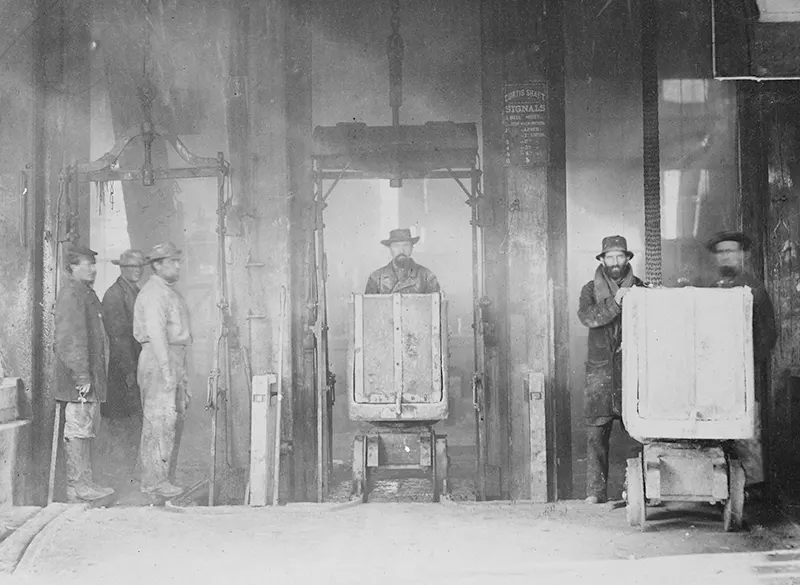
Mine workers coming out of the mine shaft. Virginia City, Nevada, 1867-1888.
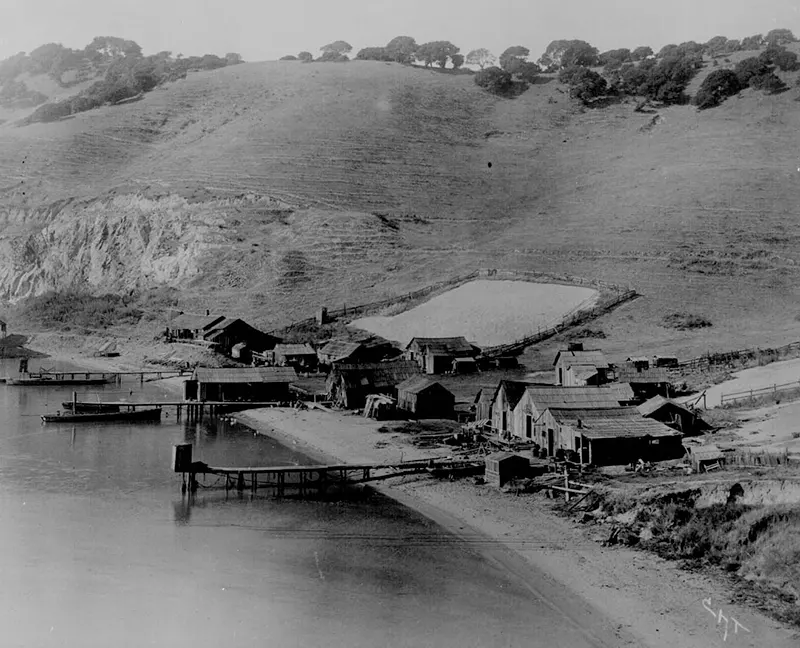
A fishing camp set up by some Chinese settlers of the American frontier. Point San Pedro, California. 1889.

Shoshone tribe members dance on a Native American reservation. Ft. Washakie, Wyoming. 1892.
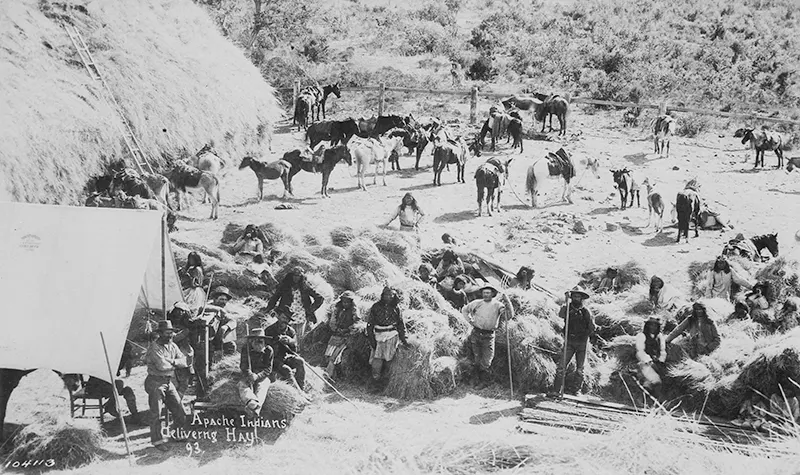
Apaches deliver hay to American settlers, Arizona. 1893.

Class in blacksmithing, Forest Grove School, Oregon, 1882.
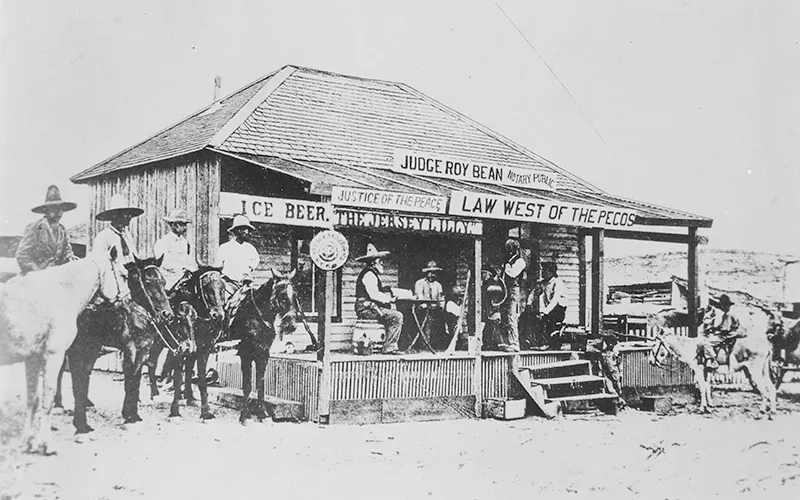
Judge Roy Bean’s notary office, which served as a saloon as well. Langtry, Texas. 1900.

Cheyenne Indians held prisoners in County Jail in Dodge City in 1878. Captured as they were trying to return to the Black Hills from a reservation in Oklahoma. 1913.

U.S. Deputy Marshals pose with the clerical force. Perry, Oklahoma. 1893.
(Photo credit: Wikimedia Commons / National Archives / Library of Congress / Wikipedia / Pinterest / Flickr).
Updated on: July 18, 2024
Any factual error or typo? Let us know.



